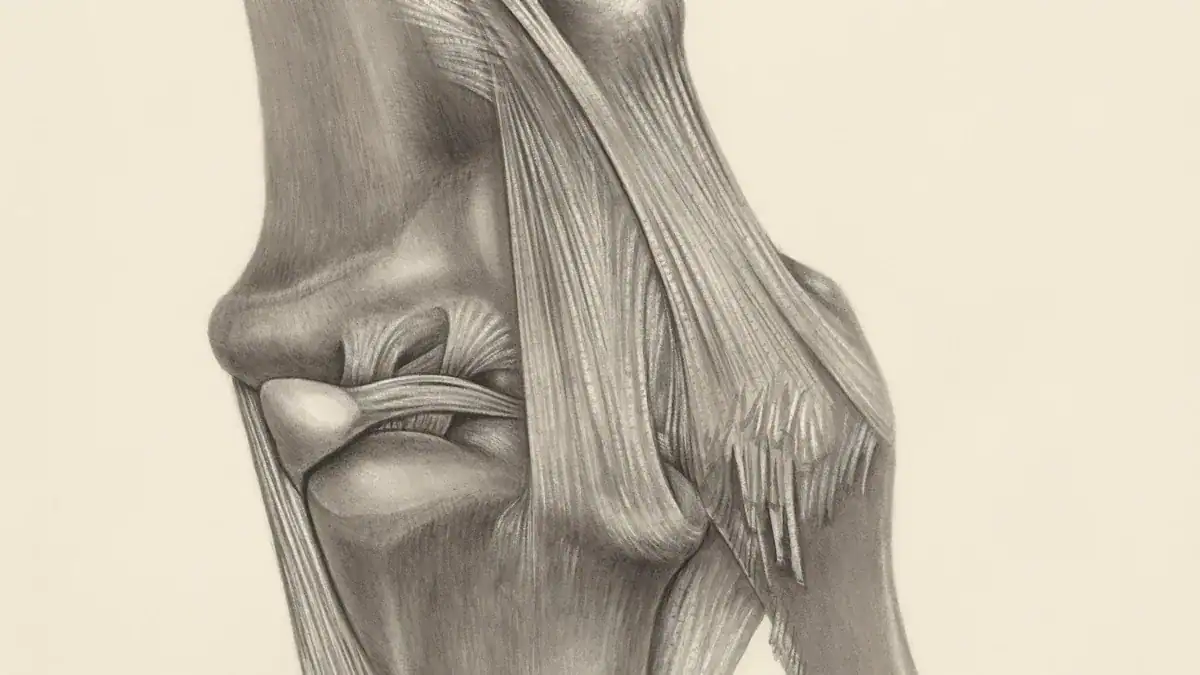
Swelling behind your knee is a common issue. Often, benign causes are responsible. A Baker’s cyst is frequently the most common reason. A simple baker’s cyst or minor injuries also cause swelling. However, swelling behind the knee can signal urgent causes. You must recognize these signs. Some conditions need immediate medical attention. This blog helps you identify these critical issues. You will know when to seek prompt medical care for your knee.
Key Takeaways
Sudden, severe pain, redness, warmth, or fever with knee swelling means you need to see a doctor right away.
Numbness, coldness in your lower leg, or trouble breathing with knee swelling are serious signs. Get medical help fast.
A Deep Vein Thrombosis (DVT) is a blood clot in your leg. It can cause swelling and pain. This clot can move to your lungs and is very dangerous.
A Baker’s cyst can burst or get infected. This causes sudden pain or fever. You need to see a doctor if this happens.
A Popliteal Artery Aneurysm is a bulge in an artery behind your knee. It can cause a throbbing lump. If it bursts, it is an emergency.
When Immediate Action Required
You must recognize specific red-flag symptoms. These signs mean you need immediate medical attention. They point to a potentially serious underlying condition. Do not delay seeking help if you experience these issues.
Sudden Severe Symptoms
Sudden, severe pain behind your knee is a critical warning sign. This type of pain often comes with rapid swelling behind the knee. Several conditions can cause these sudden, intense symptoms.
Popliteal Vein Thrombosis (DVT): This is a blood clot in a deep vein. It can cause sudden pain in the back of your knee or calf. The pain might feel like a dull ache or a sharp cramp. Walking, standing, or flexing your foot can make it worse. You might also notice swelling, tenderness, redness, and warmth.
Hamstring Injuries: These often happen to athletes. You might feel sudden pain, see swelling, or notice bruising. Weakness in the back of your leg is also common.
Ruptured Baker’s Cyst: A Baker’s cyst is a fluid-filled sac. If it bursts, you will feel a sharp pain in your knee. The fluid can spread down your calf, causing more swelling and discomfort.
Gastrocnemius Tendonitis: This is a calf strain. It causes sudden pain in the back of your leg. Quick movements in sports often cause this injury.
These sudden and severe symptoms require prompt medical evaluation.
Redness, Warmth, Fever
When swelling behind the knee comes with redness, warmth, or a fever, it signals a serious problem. These symptoms often mean an infection is present. Bacteria can enter the fluid-filled sacs (bursae) that cushion your knee. This leads to an infection. As the infection spreads, your knee joint will become warm and swollen.
You might experience:
Red, pink, or purple skin where your knee is swollen.
Warmer skin in the swollen area of your knee.
A fever.
Achiness and chills.
A knee infection is a serious health condition. If you delay treatment, your knee joint could suffer permanent damage. You could even go into septic shock. Seek emergency medical help if you have these symptoms with a knee injury. This includes chills, nausea, a high fever, or stiffness that stops joint movement. Rare infections, like septic arthritis, can also cause pain behind the knee. Doctors diagnose knee infections by testing fluid from your knee or doing a blood test. Sometimes, an X-ray helps assess joint damage.
Numbness or Coldness
Numbness or coldness in your lower leg along with swelling behind the knee is a medical emergency. These symptoms indicate a severe problem with blood flow or nerve function.
Coldness of the feet: If your feet feel cold, and you have weak or absent pulses, along with a lump behind your knee, you need immediate medical care. This suggests a serious blockage in your blood vessels.
Loss of sensation: If you cannot feel your lower leg, and you have a lump behind your knee, seek immediate medical evaluation. This points to nerve damage or severe circulatory issues.
Deep Vein Thrombosis (DVT): A blood clot in your leg can cause a lump behind your knee. This is a serious, life-threatening cause. It requires immediate evaluation.
These signs mean you need urgent advice from a doctor. Do not wait.
Breathing Difficulties
Breathing difficulties are a critical symptom. If you experience shortness of breath, chest pain, or dizziness along with pain or swelling in your leg, seek emergency medical care immediately. This combination of symptoms can indicate a pulmonary embolism. A pulmonary embolism happens when a blood clot, often from a DVT in your leg, travels to your lungs. This is a life-threatening medical emergency. Your life depends on quick action.
Deep Vein Thrombosis (DVT)

Understanding DVT
Deep vein thrombosis (DVT) is a serious condition. It involves a blood clot forming in a deep vein. This often happens in your leg. A DVT can block blood flow. This blockage can cause significant swelling and pain. You need to understand DVT because it can lead to severe health problems.
DVT Symptoms and Risks
You might notice swelling in your leg. You could also feel pain or tenderness. Your skin might feel warm or look red. Several factors increase your risk for DVT.
Here are common risk factors for DVT:
Recent surgery
Tobacco use
Obesity
Taking estrogen (birth control or hormone replacement therapy)
Previous DVT
Immobility
History of cancer or active cancer
Lower extremity trauma
Family history of blood clots
Pregnancy
Age over 40
Being assigned male at birth
Inherited conditions like Factor V Leiden
It is important to know how DVT differs from other conditions causing swelling behind the knee.
Condition | Differentiating Symptoms (vs. DVT) |
|---|---|
Lymphedema | Swelling often includes fingers or toes; feeling of heaviness in affected legs. |
Venous Stasis | Sores or ulcers on the skin surface; varicose veins. |
Acute Compartment Syndrome | Happens after a sudden injury; intense pain when stretching muscle. |
Acute Arterial Occlusion | Skin of the limb is typically cool and pale; normal pulse may not be felt. |
DVT: An Emergency
A deep vein thrombosis is a medical emergency. The blood clot can break free. It can travel to your lungs. This causes a pulmonary embolism. A pulmonary embolism is life-threatening. You must seek immediate medical help if you suspect DVT.
First Steps and Treatment
If you suspect DVT, you must see a doctor right away. Doctors often manage DVT with medication. Anticoagulants are common. These medicines thin your blood. They stop the blood clot from growing. They also prevent new clots. Examples include warfarin or direct-acting oral anticoagulants (DOACs). For severe cases, doctors might use thrombolytic therapy. This therapy breaks up the blood clot. Sometimes, doctors consider inferior vena cava (IVC) filters. These filters catch clots before they reach your lungs. You will usually take anticoagulants for at least three months.
Baker’s Cyst Complications
A Baker’s cyst often feels like a soft lump at the back of the knee. It is usually harmless. However, a Baker’s cyst can sometimes become a serious problem. You need to know when a Baker’s cyst requires urgent medical attention.
Baker’s Cyst: When Urgent
A simple Baker’s cyst does not usually cause severe issues. But complications can arise. These complications make a Baker’s cyst urgent. The main causes are rupture or infection of the cyst. You must recognize these changes. They turn a common Baker’s cyst into an urgent concern.
Ruptured Cyst Signs
A ruptured Baker’s cyst causes sudden, intense symptoms. You might feel sharp pain in your knee and calf. The fluid from the cyst leaks out. This causes swelling of the calf. You might also feel a sensation of water running down your leg. Bruising can appear on the inner ankle. This is called the ‘crescent sign’. The pain often worsens with full knee extension or activity. These symptoms of a Baker’s cyst can look like a deep vein thrombosis (DVT). Doctors must check you to rule out DVT. The incidence of Baker’s cyst rupture is rare in patients with suspected DVT, occurring in only 3-4%.
Infected Cyst Symptoms
An infected Baker’s cyst is very rare. Only a few cases are reported. Still, you should know the signs. An infected cyst can cause posterior knee pain and local swelling. The area might feel warm and look red. Doctors define a ‘septic compartment’ by a purulent fluid sample. This means they find pus when they test the fluid. Always suspect a cyst if you have recurrent septic knee arthritis. An MRI or ultrasound helps diagnose the infection and collect fluid samples.
Managing Complications
Managing complications of a Baker’s cyst depends on the problem. If your Baker’s cyst is infected, doctors prescribe antibiotics. These medicines fight the infection. For a ruptured Baker’s cyst, treatment focuses on managing your symptoms. This includes pain relief and reducing swelling. Doctors also provide patient education. This helps you understand your condition and prevent future problems. Sometimes, doctors drain the cyst. This is part of the treatment for a Baker’s cyst.
Popliteal Artery Aneurysm
A popliteal aneurysm is a serious condition. It involves a bulge in the wall of the popliteal artery. This artery runs behind your knee. This type of aneurysm is rare. It can cause severe problems if it ruptures or forms a clot.
Identifying Aneurysm
You might not notice a popliteal aneurysm at first. Sometimes, you feel a throbbing lump behind your knee. A doctor can often feel an enlarged artery at the back of your knee. This artery might throb with your pulse. The area may look swollen and red. It usually does not feel painful to touch. You can also see how common this condition is:

Aneurysm Rupture Symptoms
A ruptured popliteal aneurysm is an emergency. You will feel sudden, severe pain behind the knee. This pain happens because the artery wall has burst. This is a critical situation.
Untreated Aneurysm Risks
Leaving a popliteal aneurysm untreated carries significant risks. The aneurysm can form a clot. This clot can block blood flow to your leg. This blockage can cause severe damage. Small pieces of the clot can also break off. These pieces travel down your leg. They can block smaller arteries. This leads to complications in up to 31% of untreated cases. Untreated popliteal aneurysms can threaten your limb. You also face a higher risk of new aneurysms forming elsewhere.
Diagnosis and Treatment
Doctors use duplex ultrasonography to diagnose a popliteal aneurysm. This imaging method helps them see the artery. Treatment depends on the aneurysm’s size and your symptoms. For small, symptom-free aneurysms, doctors may just watch it. They use regular ultrasounds. If the aneurysm is larger or causes problems, you might need treatment. Options include open surgery or an endovascular approach. Open surgery involves replacing the damaged part of the artery. The endovascular approach uses a stent inside the artery. Both aim to prevent rupture and restore blood flow.
Other Urgent Causes and Differentiation

You now understand many urgent causes of swelling behind the knee. However, other less common but serious conditions exist. You need to know how to tell these urgent concerns apart from more common, less serious issues.
Acute Compartment Syndrome
Acute Compartment Syndrome (ACS) is a serious condition. It happens when pressure builds up inside a muscle compartment. This pressure can cut off blood flow to muscles and nerves. This can lead to permanent damage if you do not get treatment quickly. ACS often occurs after a severe injury.
You should look for these signs:
Your affected leg swells.
You cannot actively move your foot flexors and extensors.
Your pain gets worse over time.
You feel pain when someone passively stretches your affected muscles.
You might feel numbness in the web space between your first and second toes. This is a late sign.
An absent pulse means arterial injury, not always ACS.
Doctors diagnose ACS based on your symptoms and a physical exam. They look for the “six P’s”:
Pain: Severe pain is the earliest sign.
Poikilothermia: Your body cannot regulate temperature in the affected limb.
Pallor: Your skin looks pale.
Paresthesia: You feel numbness or tingling.
Pulselessness: You have no pulse in the limb. This is a late sign.
Paralysis: You cannot move the limb. This is also a late sign.
Doctors also measure the pressure inside your muscle compartment. A pressure above 30mmHg needs immediate surgery.
Synovial Sarcoma
Synovial sarcoma is a rare type of cancer. It often grows near large joints, like your knee. This tumor grows slowly. It might not cause pain at first. You might not notice symptoms until the tumor becomes large enough to see or feel.
Synovial sarcoma can cause:
A visible and palpable lump. This lump might not hurt.
Numbness.
Pain.
Swelling.
This condition can press on nerves. This causes pain or numbness. Its symptoms can look like less serious problems. For example, it can mimic arthritis or bursitis. This can delay finding the tumor. Most often, you find it in your lower limbs, especially around the knee.
Common Causes vs. Urgent Concerns
It is important to know the difference between common causes of swelling behind the knee and urgent medical concerns. Many times, swelling is not serious. For example, swelling after physiotherapy usually resolves with rest. However, some signs mean you need immediate medical help.
Here is how you can tell the difference:
Factor | Benign Causes (e.g., post-physiotherapy swelling) | Urgent Medical Concerns (e.g., prosthetic joint infection, fracture, septic arthritis) |
|---|---|---|
Resolution with Rest | Resolves with rest | Unlikely to improve with rest |
Movement/Weight Bearing | Not severely limited | Limited movement, inability to weight bear |
Skin Appearance | Normal | Skin is ‘shiny’ (septic arthritis) |
Tenderness | Mild | Very tender, you stop the doctor from touching |
Pain at Rest | No pain at rest | You experience pain at rest |
Systemic Signs | None | High fever, septic (septic arthritis) |
Deformity/Bruising | None | You may have bruising, obvious deformity |
For less urgent issues, you can try self-care. Use the RICE method: Rest, Ice, Compression, and Elevation. Over-the-counter pain medicines can also help. If your swelling or pain continues, does not go away with self-care, or affects your daily life, see a doctor. A deep vein thrombosis (DVT) can be asymptomatic. It can also cause swelling, pain, tenderness, and flushed skin. Its urgency comes from the risk of a blood clot traveling to your lungs. This needs immediate medical care.
Diagnostic Imaging Role
Doctors use imaging tests to find the cause of your swelling behind the knee. MRI and ultrasound (US) are both very good at showing problems in your knee joint.
Ultrasound offers real-time images. It works well for structures close to the skin. However, its use can depend on the skill of the person doing the scan. Your body type and how deep the problem is can also limit it. For example, doctors used ultrasound to diagnose a popliteal artery aneurysm in a 69-year-old man. The images showed an enlarged artery with turbulent blood flow.
MRI is excellent for seeing problems in both superficial and deep parts of your knee. It provides detailed pictures of soft tissues and bones.
For diagnosing DVT behind the knee, ultrasound is very accurate. Bedside ultrasounds done by emergency doctors have a sensitivity of about 95% and a specificity of about 96%. A specific 3-point compression ultrasound protocol, which includes the popliteal vein behind the knee, has a sensitivity of 100% and a specificity of 93.3%. This method is as accurate as a full leg scan. These tools help doctors quickly find urgent causes of your knee swelling.
You must never ignore swelling behind the knee, especially with urgent symptoms. Look for key warning signs. These include sudden severe pain, redness, warmth, and fever. You might also experience chills or a sensation of heat in the knee.
Numbness, difficulty breathing, persistent inflammation, or inability to bear weight also signal danger. Delaying evaluation for these causes, like Deep Vein Thrombosis (DVT), risks serious health consequences such as a life-threatening Pulmonary Embolism (PE). Early recognition and prompt medical evaluation are crucial. Seek urgent advice from a healthcare professional immediately if you experience any of these symptoms.



